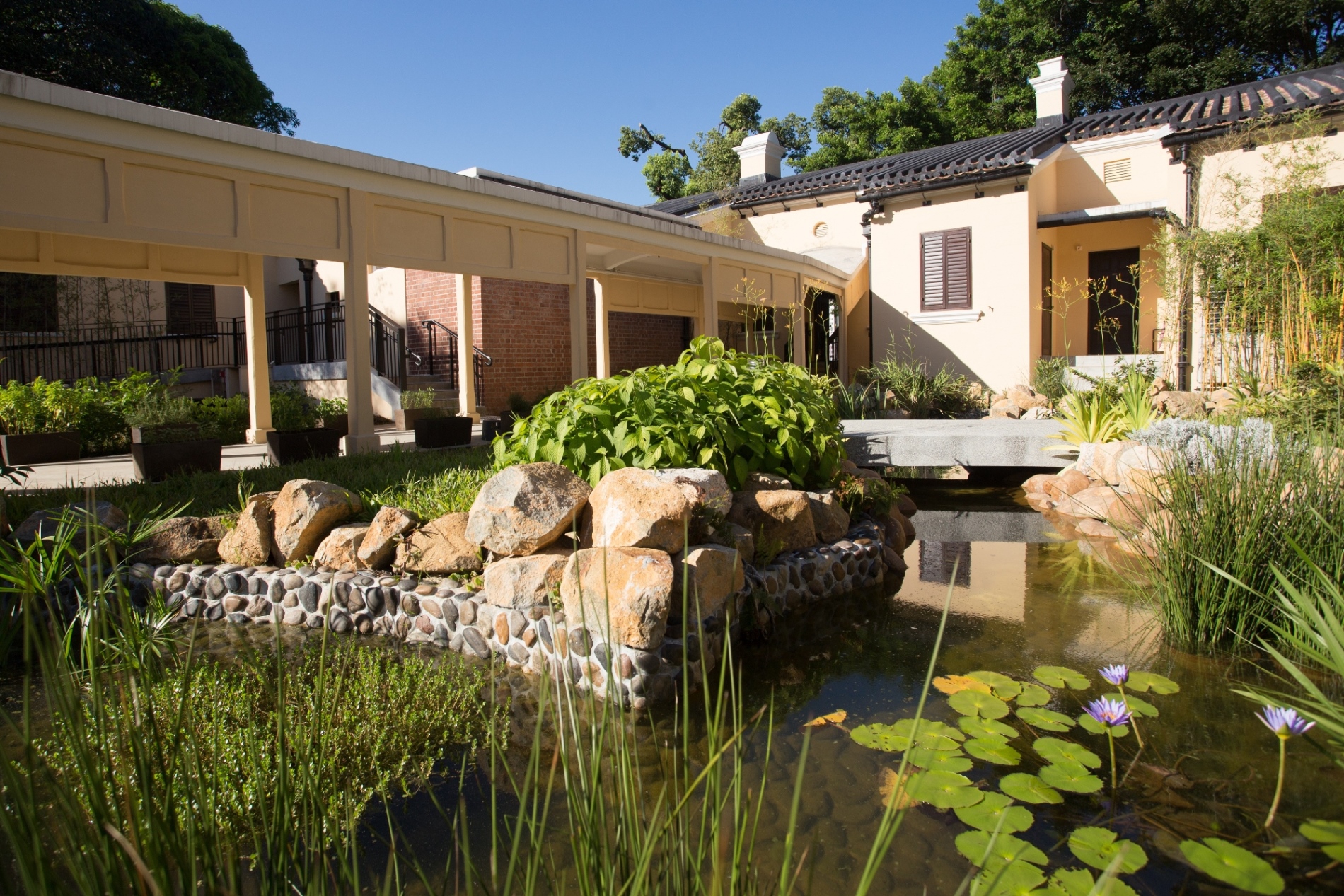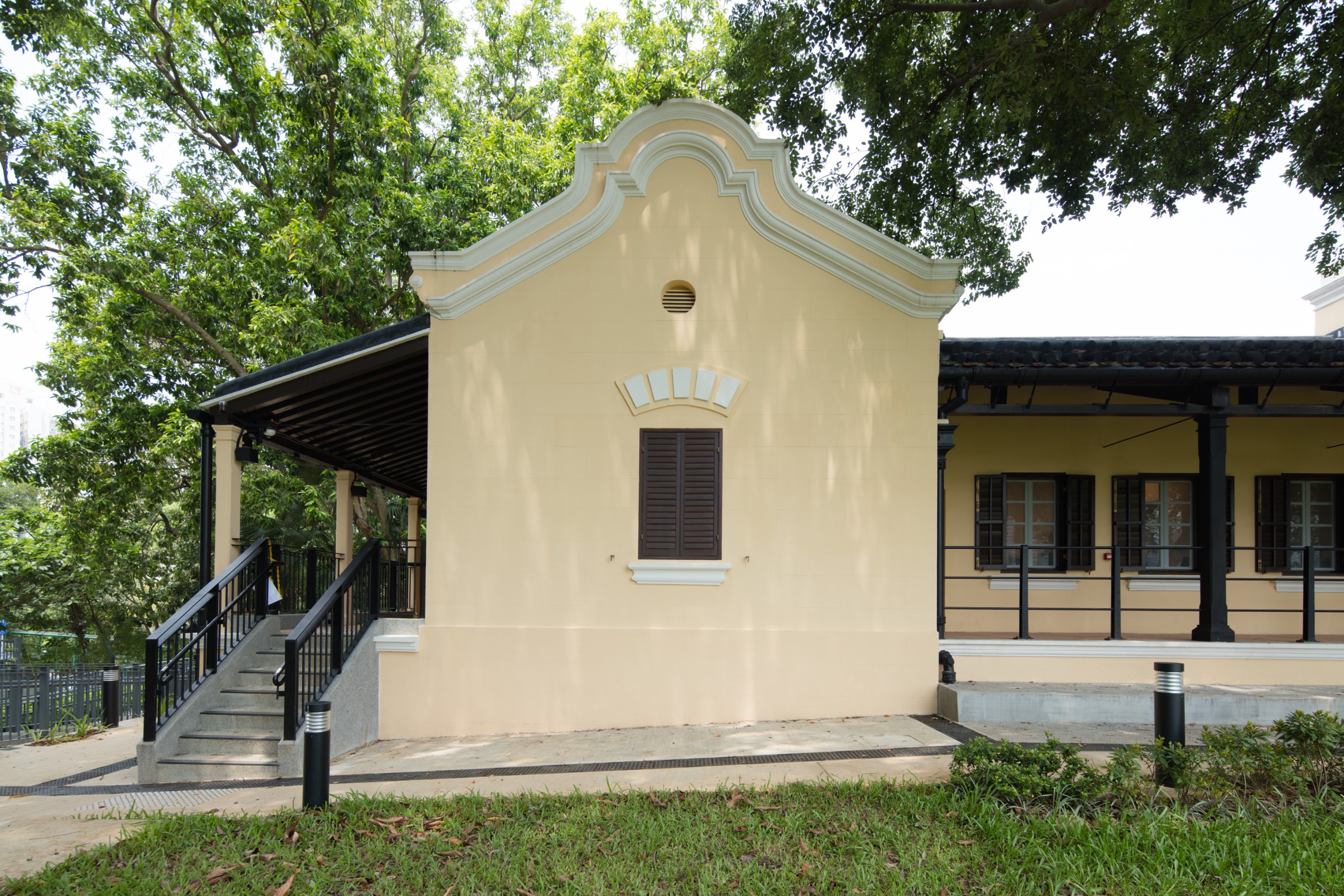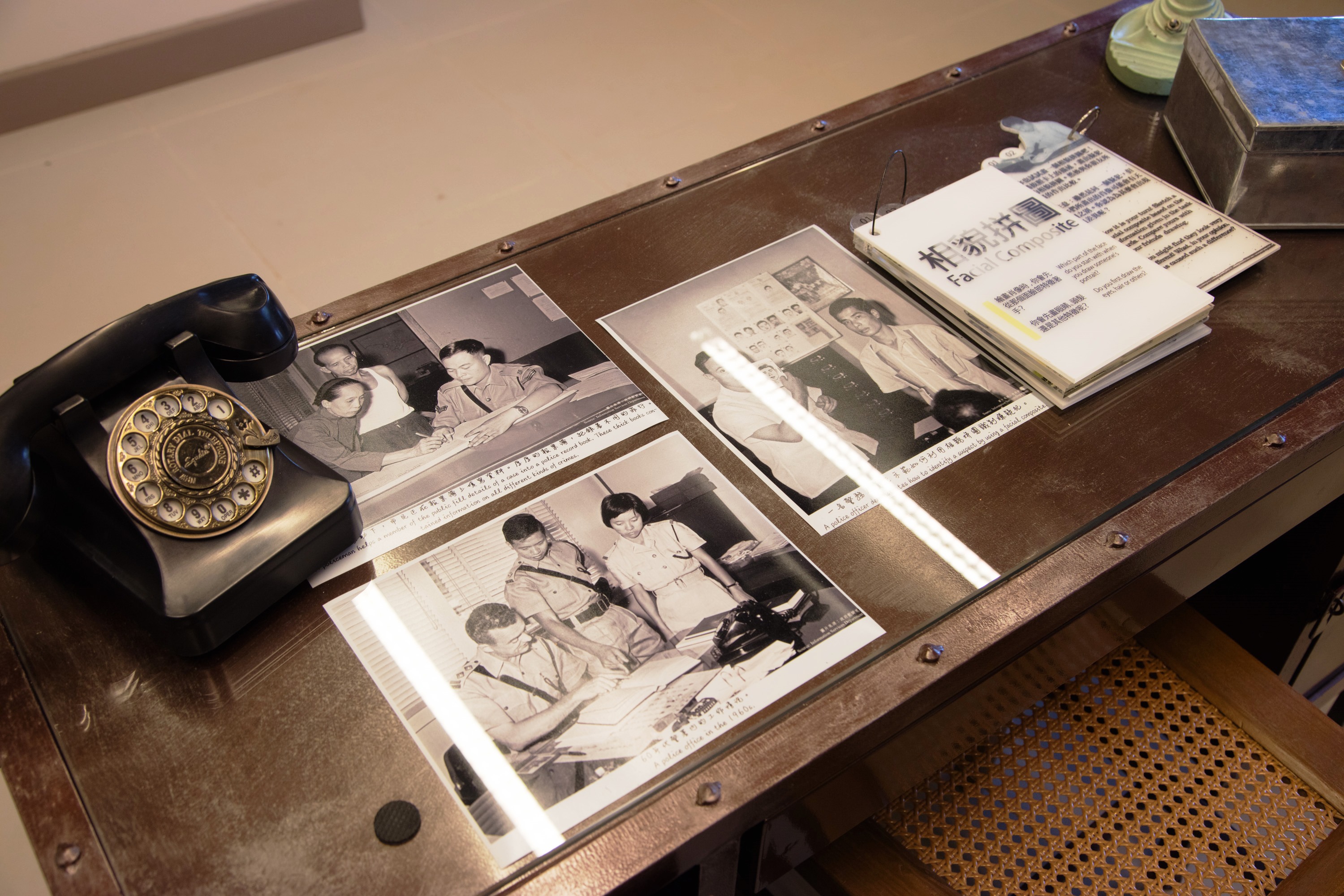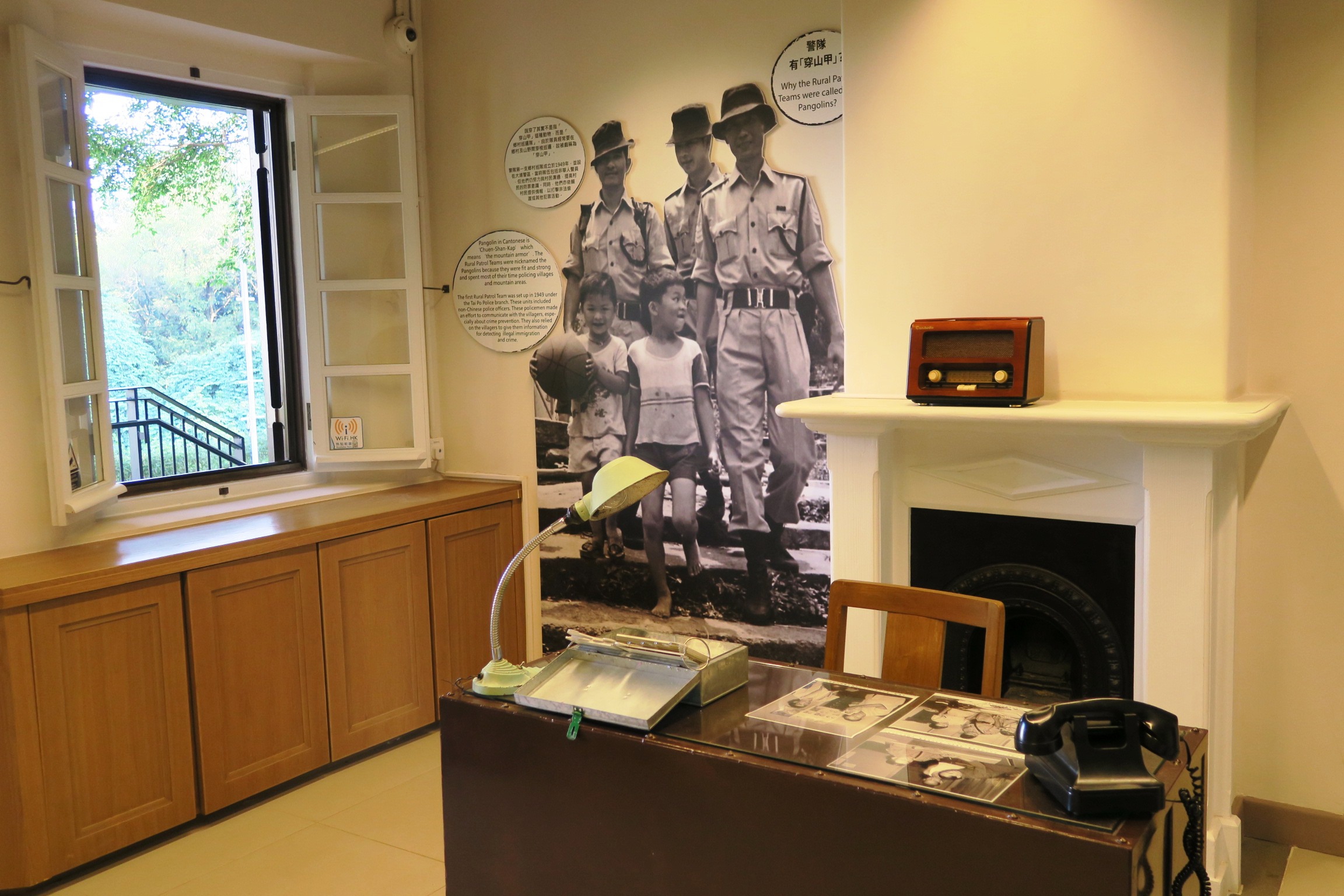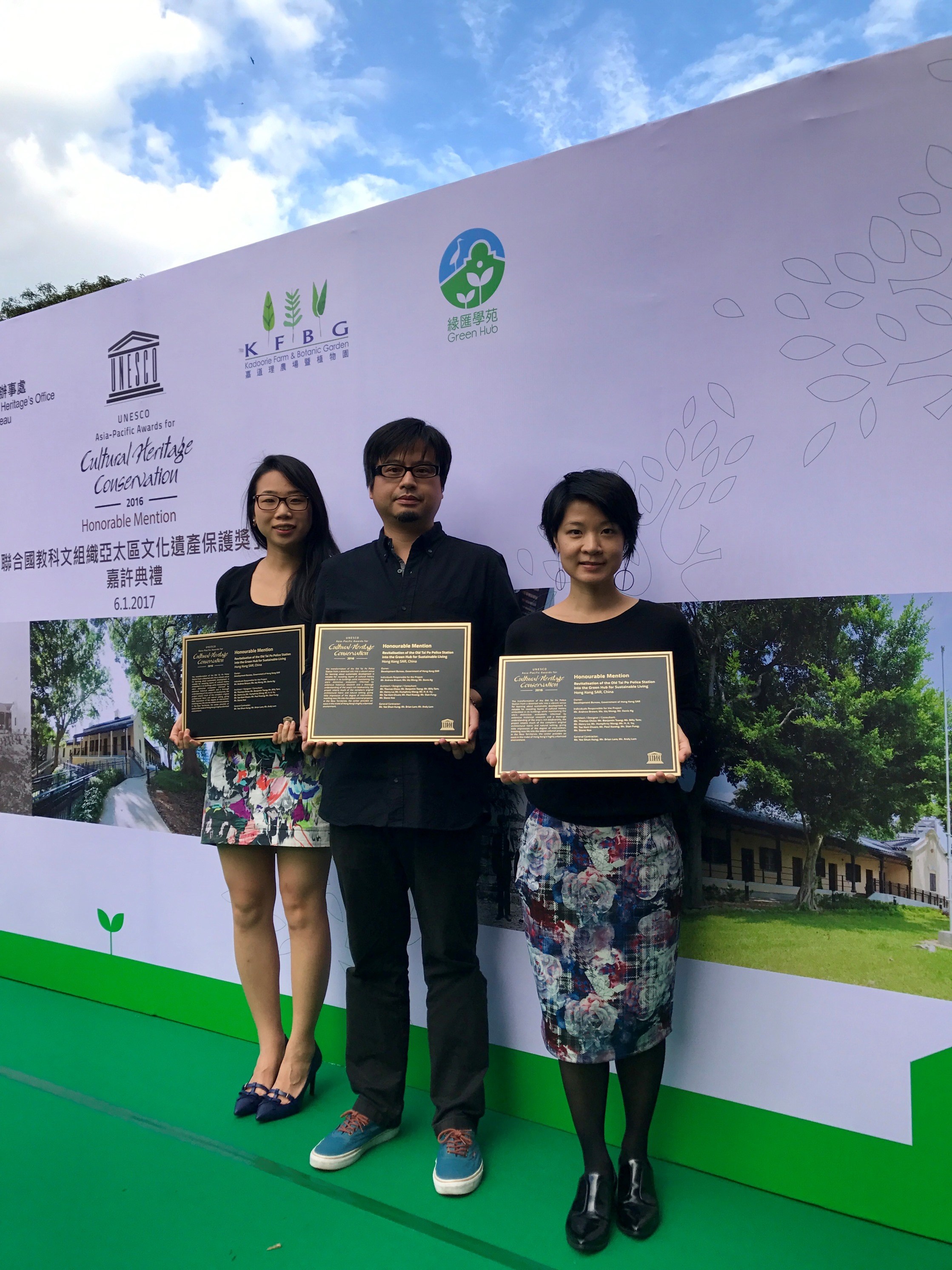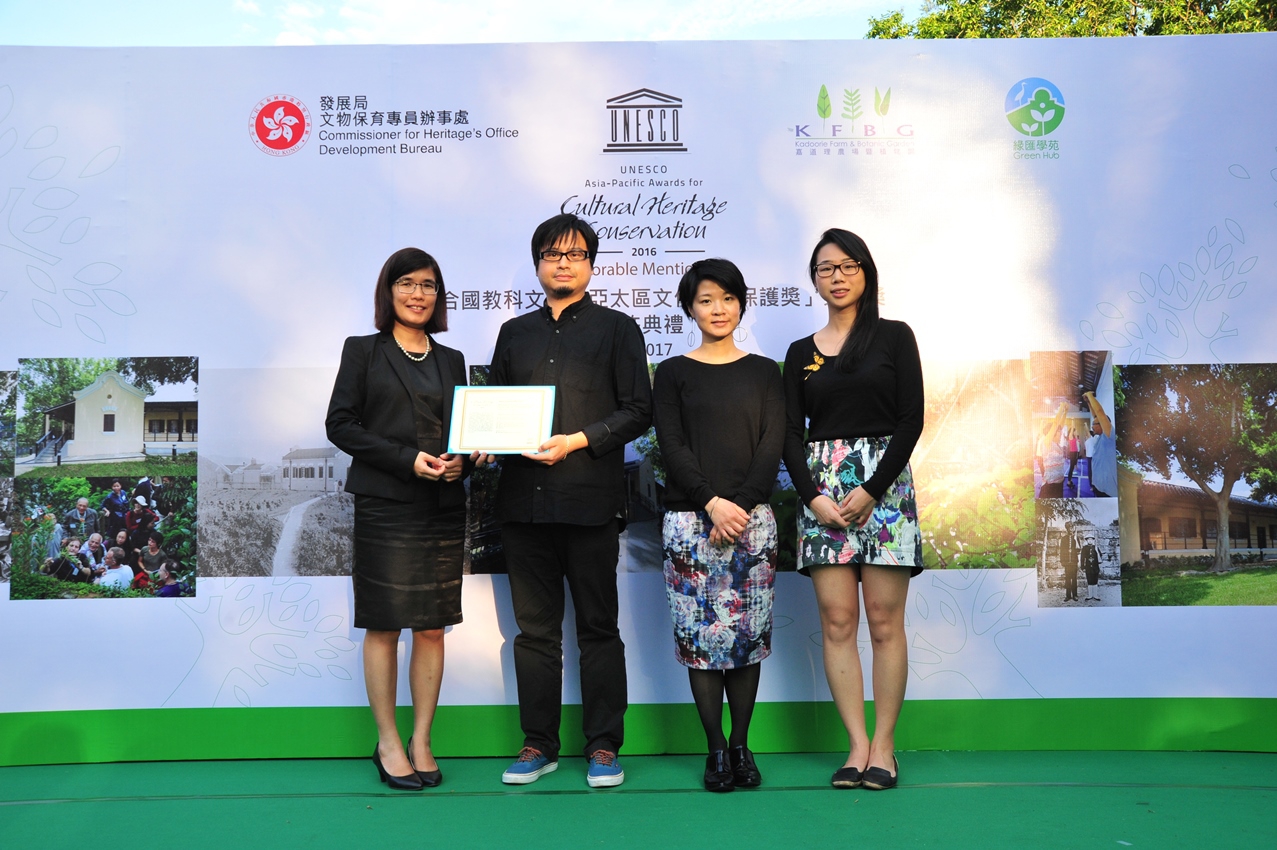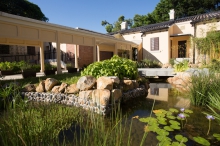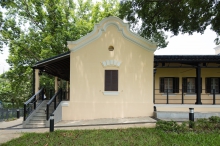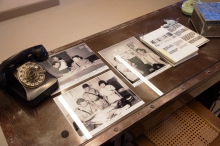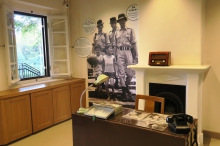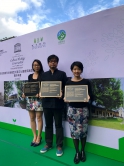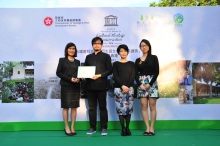CUHK
News Centre
CUHK Conservation Consultancy Team Recognized by UNESCO for Revitalizing Old Tai Po Police Station
The Centre for Architectural Heritage Research (CAHR) of the School of Architecture at The Chinese University of Hong Kong has been a key player in the revitalization project for the Old Tai Po Police Station over the past five years, offering professional advice on preservation and revitalization of the historic buildings. The heritage site has now been transformed into a Green Hub for sustainable living and received an Honorable Mention in this year’s UNESCO Asia-Pacific Awards for Cultural Heritage Conservation, being the only winning heritage project from Hong Kong this year. Dr. Duong Bich Hanh, Chair of Jury for the Award and Chief of UNESCO, Bangkok’s Culture Unit, joined the award presentation ceremony held at the Green Hub today (6 January). Mr. Henry Lo, Associate Director of CAHR, received the award on behalf of the conservation consultant team from CUHK.
Constructed in 1899, the Old Tai Po Police Station was the first police station and police headquarters in the New Territories. It was rated as a Grade I historic building in 2009 in view of its cultural significance. In 2010, CAHR assisted the Kadoorie Farm and Botanic Garden Corporation (KFBG) in submitting a proposal for the ‘Revitalizing Historic Buildings Through Partnership Scheme’ launched by the Commissioner for Heritage’s office of the Development Bureau. The plan was to revitalize the historic buildings of the Old Tai Po Police Station into a landmark of sustainable living. The professional team from CAHR meticulously studied the history and architecture of the buildings and the site, and devised a comprehensive proposal that could preserve the unique architectural features, restore its original appearance and adapt the historical space to new functions.
CAHR was engaged as the Conservation Consultant after KFBG was selected to undertake the preservation and revitalization project for the Old Tai Po Police Station. The team from CAHR devised the restoration plan and oversaw the whole construction process to ensure a good balance between preserving historic fabrics and installing new functional facilities. The CAHR team was also responsible for curation of the premise into an exhibition site. Various representative features of the heritage site, such as the report rooms, retention cells and the armoury are well restored and converted into an area of Heritage Display. The team also curated a Heritage Trail which connects the significant historical, architectural and ecological features of the site.
Mr. Henry Lo, leader of the consultancy team and Associate Director of CAHR at CUHK, said, ‘Our aim was to preserve the architectural integrity of the Old Tai Po Police Station and reveal the original appearance of its architectural features, including the pitched roof with Chinese pan and roll tiles, the chimneys, and the Dutch gable. In addition to the display of old newspapers and vintage dial phones playing oral history narrated by people from all walks of life in Tai Po, we simulated various scenes and operations of the police station. These exhibits tell how different parties worked and lived inside the police station and the history of the New Territories.’
The Green Hub has now become a public space for the promotion of sustainable and low-carbon living, and demonstrates how we can live sustainably while at the same time respecting nature and respecting each other. The UNESCO Heritage Awards described the project as ‘the transformation from a deserted relic into a vibrant venue for learning sustainable development. It is notable for revealing layers of cultural history embedded in its buildings while maintaining the site’s distinctive ecosystem. Instilling new life into the oldest colonial property in the New Territories, the centre provides an oasis in the midst of Hong Kong’s highly urbanized environment.’
About the Centre for Architectural Heritage Research
The Centre for Architectural Heritage Research of the CUHK School of Architecture has developed into a very active research unit that has extensive experience in undertaking contract research in conservation studies of historic buildings and their environment, and in academic research into the built heritage of Hong Kong and southern China. The Centre has worked on projects for government departments, quasi-government agencies, and private charitable agencies. It has also been involved in wide-ranging projects including historical research, architectural studies, architectural appraisals, photographic surveys, cartographic surveys, conservation studies, and heritage impact assessment. Prof. Puay Peng HO is Director of the Centre.
About the UNESCO Asia-Pacific Awards for Cultural Heritage Conservation
The UNESCO Asia-Pacific Awards for Cultural Heritage Conservation were established in 2000 to recognize and encourage private efforts and public-private initiatives in successfully restoring structures of heritage value in the region. Among the 40 entries this year, a total of 13 projects from six countries – Australia, China, India, Iran, Japan and Pakistan – were recognized.
The consultancy team from CUHK CAHR offers professional advice on revitalization of the Old Tai Po Police Station which was transformed into a Green Hub for sustainable living.
When devising the restoration plan, the CAHR team preserves the original architectural features of the Old Tai Po Police Station, including the Chinese pitched roof and the Dutch gable.
The CAHR team is also responsible for curation of the premise into an exhibition site, restoring various representative features of the heritage site.
The CAHR team is also responsible for curation of the premise into an exhibition site, restoring various representative features of the heritage site.
The consultancy team led by Mr. Henry Lo (middle), Associate Director of CAHR, CUHK offers professional advice on revitalization of the Old Tai Po Police Station which was transformed into a Green Hub for sustainable living.


